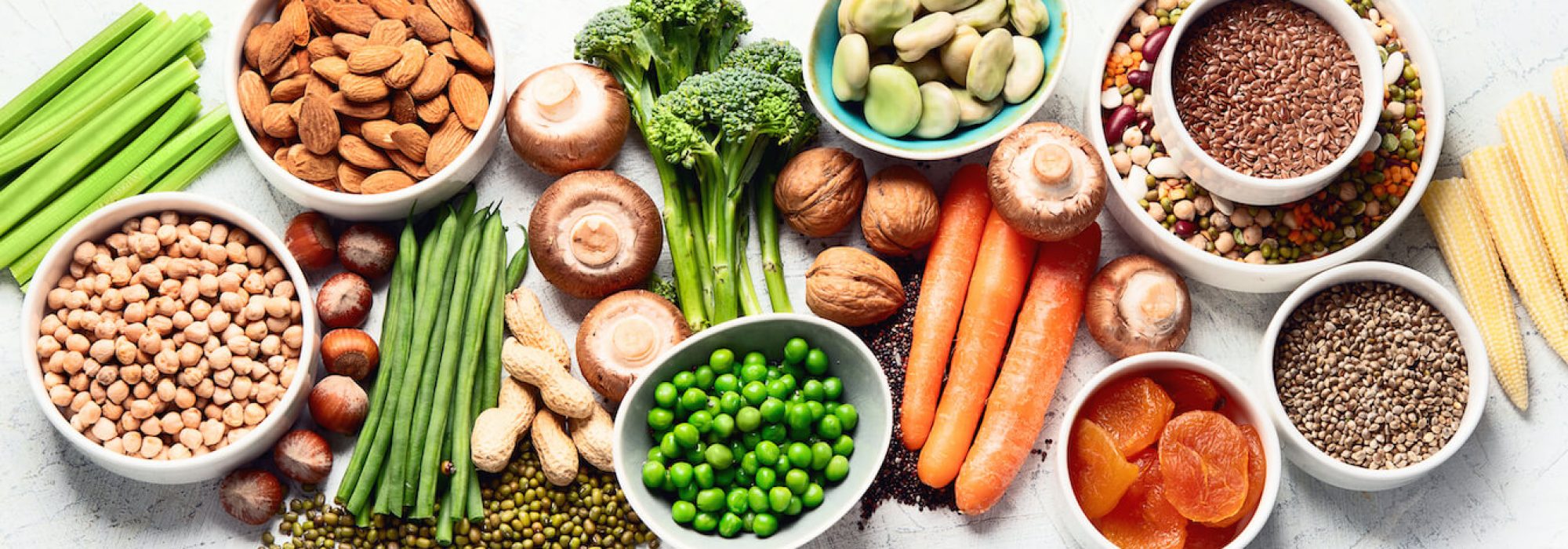Below are five very common nutrition myths which I come across on a daily basis when consulting with clients.
MYTH #1 – ALL CALORIES ARE EQUAL
A calorie is a calorie, right? Wrong. Yes, a number of years ago I was also led to believe that all calories were equal and that the body treats a calorie as a calorie no matter its origin. Thankfully, this thinking has long been squandered with science and a better understanding of the role nutrition plays in the body.
It is well understood that the body needs a minimum amount of vitamins and minerals on a daily basis for optimal functioning. When I say optimal functioning, that simply means enough energy to get through the day, enough immunity to counteract viruses, and enough nutrition to prevent diseases such as diabetes, heart disease and metabolic syndrome.
Inadequate vitamin and mineral intake leads to deficiencies which can then result in fatigue, lethargy, high blood pressure, uncontrolled sugar levels, weight gain, lowered immunity, poor skin appearance, muscle wastage, poor appetite, slowed metabolism, decreased concentration, forgetfulness and moodiness to name a few symptoms, but far from all.
In addition to this, a calorie comes from one of three macronutrients; carbohydrates, protein or fats. The human body requires a delicate balance of all three of these macronutrients. If an individual were to favour carbohydrates and consume them in excess they might land up with diabetes; if an individual consumed excessive protein this might result in increased stress on the kidneys, and if the individual consumed excess fat from nutritionally poor sources, they might result with elevated cholesterol levels. Therefore, it is not so much about consuming a calorie but rather nourishing your body and feeding it what it needs.
Taking lead from Hippocrates who said “Let food be thy medicine, and medicine be thy food”, I have put together a list of common foods and what their basic outcome would be when consumed.
- A calorie from an avocado helps reduce total cholesterol levels.
- A calorie from an apple provides a boost of instant energy.
- A calorie from a Big Mac may increase atherosclerosis.
- A calorie from an almond increases satiety.
- A calorie from orange juice pushes sugar levels up quickly and drops them just as quickly.
- A calorie from steak assists in muscle recovery.
- A calorie from chicken decreases the risk of muscle wastage.
- A calorie from fish improves cognitive function and decreases cholesterol levels.
- A calorie from broccoli improves immunity.
- A calorie from dairy strengthens bones.
- A calorie from spinach improves energy levels.
- A calorie from silverbeet improves bowel motions.
As you can see, each type of food does something different to the body because of its nutritional makeup. A calorie is not just a calorie. As Ann Wigmore so accurately puts it: “The food you eat can either be the safest most powerful form of medicine or the slowest form of poison.”
MYTH #2 – CLEAN EATING IS DANGEROUS
Clean Eating – the act of eating real food, but has to be given a fancy title because it sounds so ludicrous to only eat real food.
First of all, let’s clear up what clean eating actually means – clean eating is eating foods which are unprocessed and in their most natural state. It includes foods such as meat, eggs, dairy (although some avoid), fruit, vegetables, beans, lentils, nuts, seeds and oils. It excludes foods which are processed such as pre-made meals, breakfast cereals and muesli bars. Clean eating essentially means eating natural foods and avoiding unnatural foods. That’s it! Some take it to the next level with buying local, organic produce, which is great to know where your food comes from and that it has not been sprayed with chemicals, but at the end of the day, clean eating is simply eating whole foods.
When health professionals and the community suggest that “clean eating is dangerous”, they are often not referring to the act of clean eating itself, but rather the way it is approached. I’ve spoken to various health professionals and read a number of articles which suggest clean eating is dangerous secondary to food shaming when one does not adhere to clean eating guidelines. This may be due to time or financial restraints, and that clean eating is ‘trendy’ and therefore places pressure on people to follow the trend. I have also heard of the pressure it puts on those with eating disorders, and how those individuals may become quite mentally and physically unwell as a result. Again, this is a result of the way clean eating is approached, not the act of clean eating itself.
Any regime, be it exercise, work or diet, are generally not followed 100% of the time for the rest of the individual’s life, but rather act as more of a guide to follow most of the time. Life happens, everyone gets busy, convenience is sought after, and sometimes you want to indulge in a doughnut, that’s fine. Clean eating isn’t about never touching processed food again, but simply opening consumers eyes to the possibilities of increasing whole food consumption. And the more whole foods consumed, the less room and desire for processed foods. Is this not a good thing?
How eating whole foods can be dubbed as dangerous is beyond me. It in no way puts individuals at risk of nutritional deficiencies but rather improves their chances of reaching vitamin and mineral recommendations. It in no way denies consumers of any foods, other than processed foods which are Australian recommendations anyway. And in my personal opinion, is no more linked to emotional and mental disorders than any other diet, exercise or work regime.
Clean eating itself is not dangerous, it is the way it is approached.
MYTH #3 – CARBS ARE BAD FOR YOU
There are three macronutrients which are essential for humans; protein, fat and carbohydrates. Yes, carbohydrates. Carbohydrates are essential to provide energy for the cells, and in particular for the brain which requires glucose for its metabolism.
While the World Health Organisation advocates 45-65% of calories come from carbohydrates, the amount of carbohydrates actually required largely depends on individual requirements (e.g. activity levels) and disease states (e.g. diabetes). As always, it is best to seek individual advice from a health professional such as a dietitian.
The next thing to consider is the type of carbohydrates consumed.
Carbohydrates can be broken into:
COMPLEX CARBOHYDRATES
Contain more fibre and therefore allow a slower sugar release into the bloodstream thus keeping energy levels sustained throughout the day without peaks and troughs. Examples: Vegetables (skin on), quinoa, rye bread
SIMPLE CARBOHYDRATES
Contain less fibre and are therefore very quickly absorbed into the bloodstream resulting in a quick energy hit followed by an energy low. Examples: Fruit juice, cakes, sugar and sugar substitutes (honey, agave syrup, coconut sugar)
Carbohydrates are definitely essential as part of a healthy, well-balanced diet, and provide the body with a supply of energy. It is encouraged that you consume your carbohydrate recommendations from complex, whole food sources, and that you consume no more than six tsp added (simple) sugars per day.
MYTH #4 – EATING FAT GIVES YOU HEART DISEASE AND CAUSES WEIGHT GAIN
This is a misconception which has been around since 1953 when Dr Ancel Keys presented his findings from the paper “Atherosclerosis: A problem in newer public health”. His findings showed a perfect correlation in six countries between cardiovascular disease (CVD) risk and fat consumption. The low-fat era commercialisation began. It wasn’t until four years later, in 1957, when Yerushalmy and Hilleboe refuted this evidence and presented their own findings on fat intake and CVD risk from 22 countries and made the statement that “It is immediately obvious that the inclusion of all the countries greatly reduces the apparent association”. By this stage, the low-fat bandwagon was well on its way, and anything other than advocating low-fat fell on deaf ears. Large food manufacturers jumped on board offering low-fat alternatives as ‘healthier options’. Before long, everyone around the globe was consuming low-fat food in fear of gaining weight and suffering CVD.
Graph taken from “Atherosclerosis: A problem in newer public health” by DR Ancel Keys showing the perfect correlation between fat consumption and cardiovascular risk.
Graph taken from Yerushalmy and Hilleboe’s findings presented in 1957 showing the reduction in the apparent association between fat consumption and cardiovascular disease.
So, not only is the fear of fat misguided, but fat is an essential macronutrient required for optimal human functioning.
Fat hosts an array of benefits, including but not limited to:
- Improves satiety (fullness)
- Decreases cravings (secondary to increased satiety)
- Improves flavour
- Reduces cholesterol levels
- Improves cognitive function
- Improves moods/decreased depression and anxiety
- Reduces risk of heart disease
- Improves immunity
- Improves skin health.
When it comes to fat, it is only trans fat – a processed, man-made fat – which is linked to CVD. Examples of trans fat include margarine, vegetable oils and deep fried foods. All natural fats, both saturated and unsaturated, are fine to be consumed and are not linked with heart disease or weight gain. Sources of natural fats include avocados, dairy products, animal fats, nuts, oily fish and oils such as EVOO, coconut oil and macadamia oil.
MYTH #5 – SMALL, REGULAR MEALS ARE REQUIRED FOR WEIGHT LOSS
You may have heard that in order to lose weight you need to consume five to six smaller meals throughout the course of the day, instead of two to three main meals. The rationale behind this is that it keeps the metabolism kicking, and if you consume food regularly, it is less likely you will become hungry and therefore less likely you will feel the need to indulge.
However, everyone is different, and while eating small regular meals throughout the day may suit some, it definitely does not suit everyone. In my dietetic experience, whether you consume all calories within two meals, or spread it out over the course of the day, it does not affect weight loss. What does affect weight loss, however, is what you eat and how much you move. Consuming a balanced diet loaded with whole foods and with adequate amounts of protein, fat and carbohydrates, as well as moving your body regularly will result in the desired weight loss, whether you eat frequently or not.
I used to be one who would wake up ravenous and consume five to six meals per day (just as I was told to do). However, over time as I changed my diet to include more healthy fats and less refined carbohydrates, I have found I’m not nearly as hungry as before, and as a result generally eat two to three main meals a day now. The meals I consume now are higher in calories but consumed less frequently. I also have a large number of clients who are now less hungry and prefer eating less frequently throughout the day too, and they are very successful in their weight loss.
So, if you find you are not hungry through the day and would prefer two meals, that’s perfectly fine, and if you are someone who loves regular meals throughout the day, that is also fine. But the weight loss is not so much a result of how many meals you consume in one day but rather what you consume and how much you move.
AUTHOR: Kelly Hodges, BNutrDiet – Accredited Practicing Dietitian



